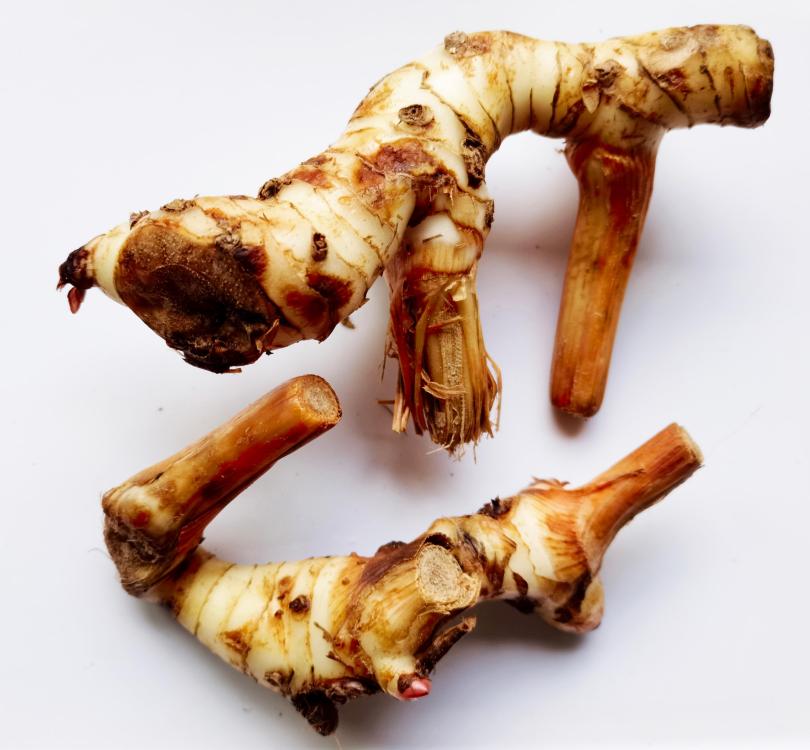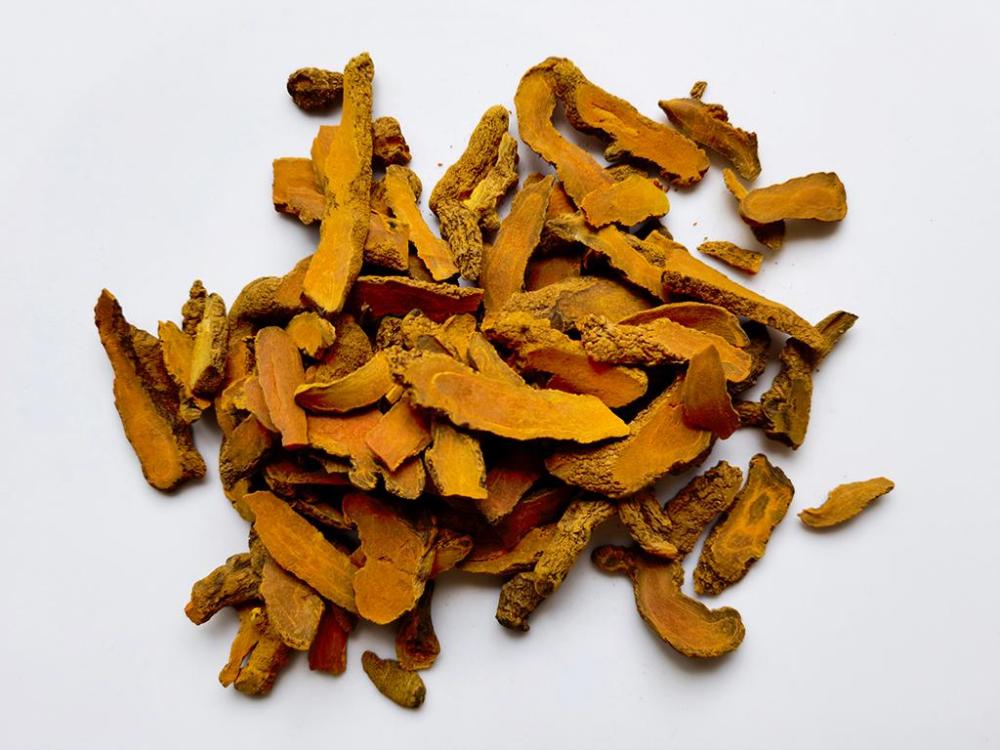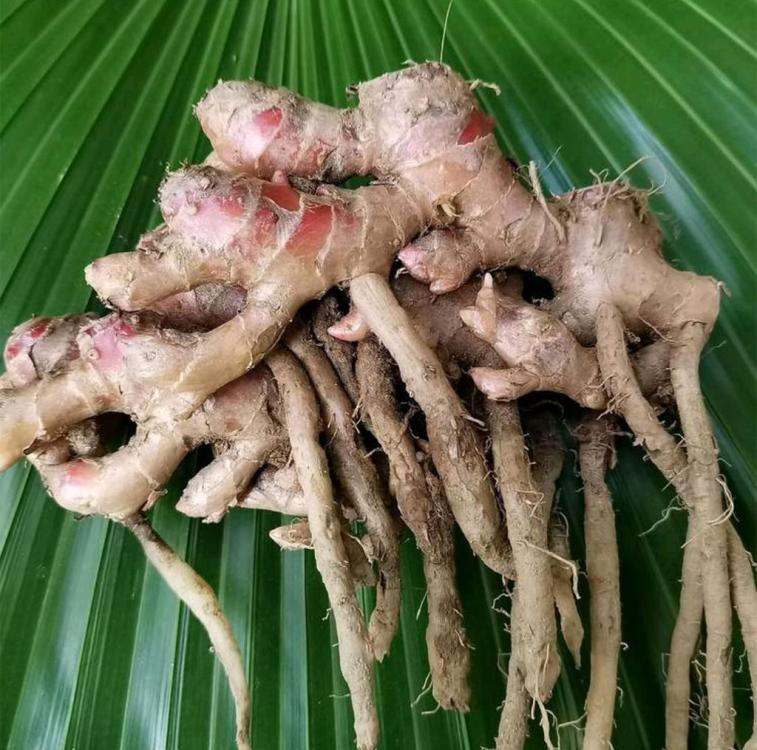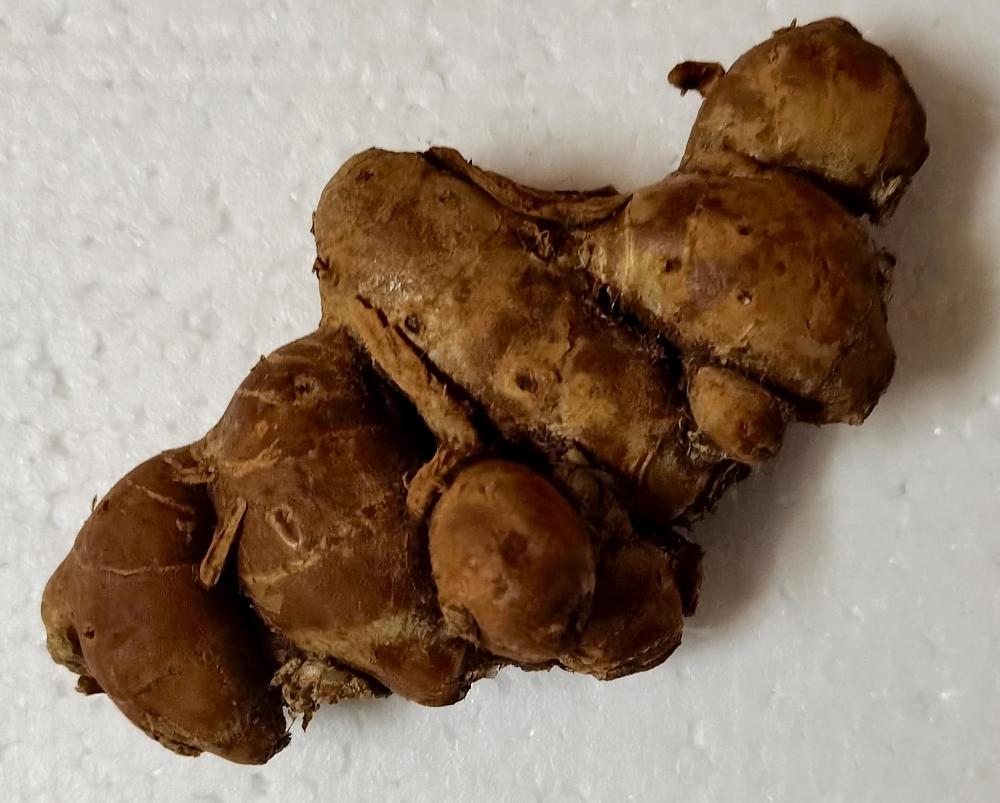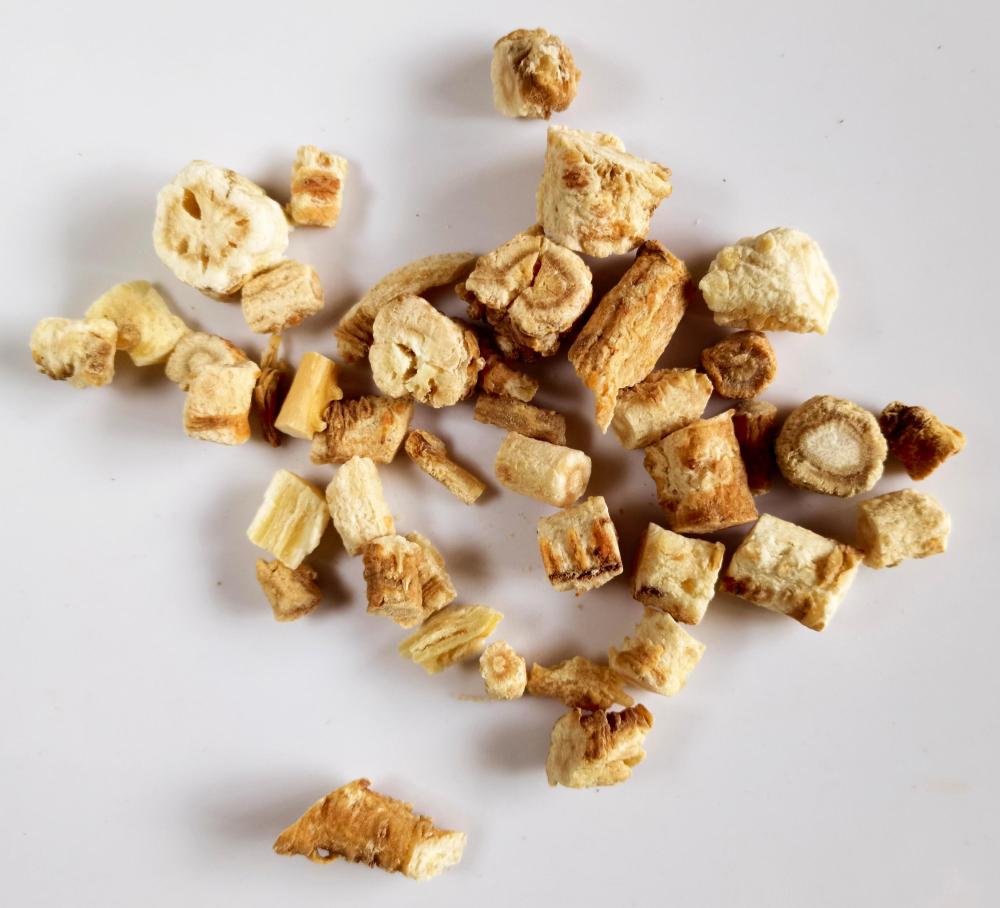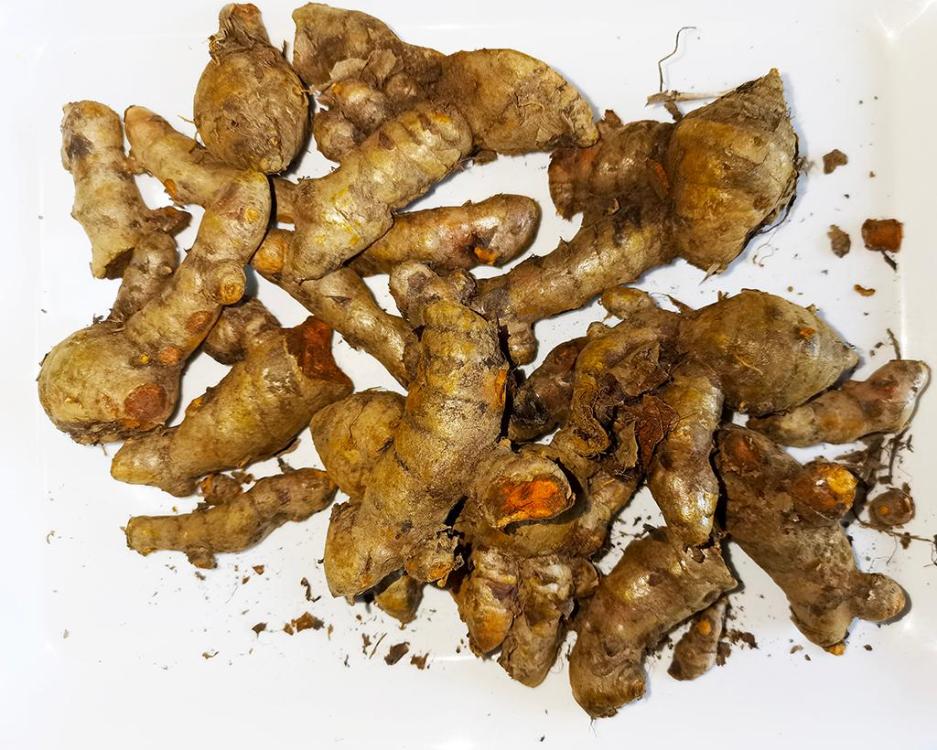A Chinese friend has recently became rather obsessed with Thai food, inspired by a new Thai restaurant opening in town (which I don’t rate very highly). She has asked me about galangal and is very confused. I tried to help and put together some information, which I am happy to pass on here.
It is important to know galangal is not one thing. In fact, there are at least four rhizomes of different plants which get called galangal all with different flavours and other characteristics.
All are members of the ginger family, Zingiberaceae, native to South-East Asia. Almost everyone seems to associate galamgal most with Thailand, but different types are also important in Chinese, Cambodian, Laotian, Vietnamese, Burmese, Malaysian, Indonesian, Singaporean, Filipino and some branches of Indian cuisine.
First up, is Alpinia galanga, also known as greater galangal, lengkuas (Malay), or blue ginger. This is considered by most to be true galangal. In Chinese, it is known as 红豆扣 (hóng dòu kòu) or 大高良姜 (dà gāo liáng jiāng). In Thai, it is ข่า and in Vietnamese, riềng nếp.
It is widely employed in Thai and Laotian curries and in several soups such as tom kha kai. Indonesian and Singaporean rendang also uses galangal.
It is also used in TCM and some Indian traditional medicines.
Galangal is sold both fresh and dried, the dried version sometimes cut into slices.
Fresh Alpinia galanga, Greater Galangal
Dried Greater Galangal
Then we have Alpinia officinarum or lesser galangal, a sweet and spicy tasting rhizome, smelling, some say, of roses. This one is native to China but is also grown in Japan, Thailand, Vietnam and India.
Here is where the confusion sets in. Although this one is correctly identified as lesser galangal, that term is also sometimes applied to Kaempferia galanga and to Boesenbergia rotunda, the other two ‘galangals’ discussed below. The term is also sometimes applied to Cyperus longus, an unrelated evergreen, grass-like plant plant whose rhizomes are used in a similar manner, but native to Europe.
In Chinese, lesser galangal is 高良姜 (gāo liáng jiāng); In Vietnamese, riềng without the nếp. Sorry, I don’t know and have been unable to find the Thai. Maybe, they don't use it.
Lesser galangal is even more widely used in TCM. Again, it turns up both fresh and dried.
Lesser Galangal
Moving on we come to Boesenbergia rotunda aka Chinese keys, fingerroot, or Chinese ginger. And sometimes, incorrectly, lesser galangal. 凹唇姜 (āo chún jiāng) in Chinese, krachai (กระชาย) in Thai and ngải bún or nga truật in Vietnamese.
This grows in rain forests in southern Yunnan, China and all over SE Asia and over to Malaysia.
It is used in several Thai dishes such as kaeng tai pla but also the rhizomes can be cooked and eaten like a root vegetable or even raw when young. Cambodian kroeung pastes often use it. India uses it in some curries. In Indonesia it is used to make jamu, the well known tonic drink.
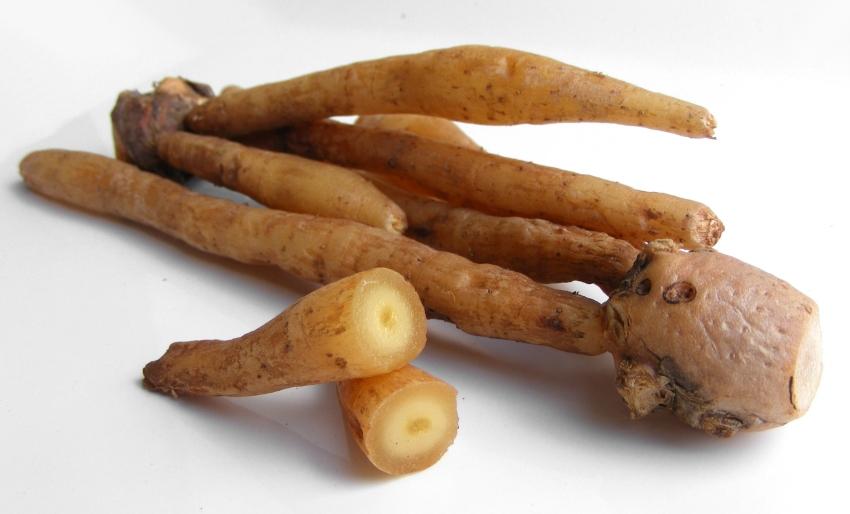
Image by FotoosVanRobin, licensed under the Attribution-Share Alike 2.0 Generic license.
Finally, we have Kaempferia galanga also known as kencur (in Indonesia), aromatic ginger, sand ginger or cutcherry. In Chinese it is 沙姜 (shā jiāng, literally ‘sand ginger’); in Thai เปราะหอม and in Vietnamese địa liền. This is very common in China and is used, as ever, both medically and as a culinary spice in hotpots and stews. It is uncommon in Thai kitchens, but is sold dried as a traditional medicine. In China, essential oils extracted from the rhizomes are used in TCM.
Sand ginger has a peppery taste and reminds some people of camphor.
Fresh Sand Ginger
Dried Sand Ginger
Whichever galangal you use, be careful not to confuse it with the similar looking fresh turmeric rhizomes. Turmeric is also a member of the Zingiberaceae family and is a valuable spice, but also makes a strong yellow dye that stains everything it touches.
Fresh Turmeric Rhizomes


